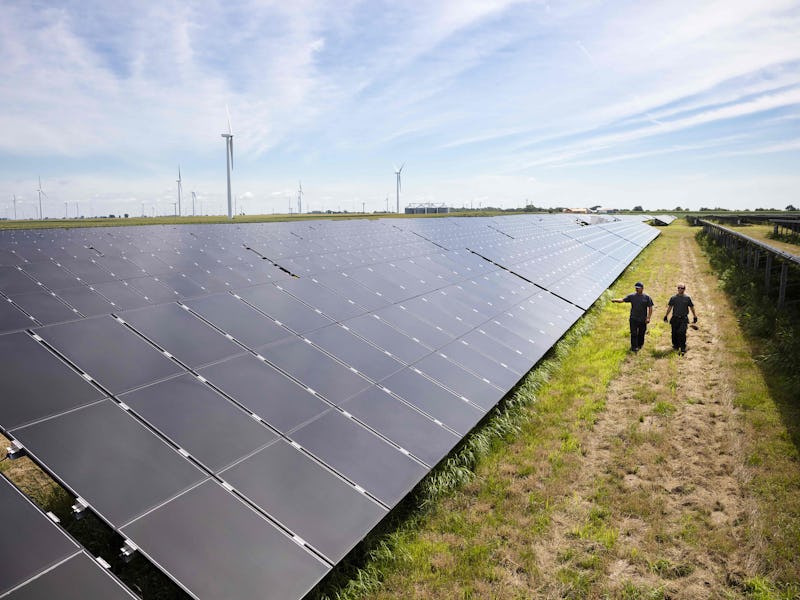Wind Power Pros and Cons: Why the Argument May Be Stronger for Solar
Renewable energy can impact the climate too.

Invenergy is gunning for the best of both worlds by bringing an unexpected type of farm to the Midwest: a hybrid solar and wind farm.
The company plans to build one of the largest hybrid renewable power sources in the world in Lima, Ohio, per a report in InsideClimateNews. Comprised of a 175 megawatt wind farm and a 150 megawatt solar farm, the setup is designed to take advantage of the strengths of each type of energy in hopes of providing Ohioans a more consistent flow of energy. It’s a rare but promising combination that could serve a total of 175,000 homes.
Pairing wind and solar together addresses a classic problem with renewable energy: A given system is limited by the strength of winds (which are typically stronger at night) and how much the sun decides to make its appearance. By sharing equipment to channel the power that comes from each, the Australian government estimates that systems can save anywhere from 3 to 13 percent upon installation. With high wind and solar resources, India is also an early adopter of these hybrid systems, releasing draft policy to encourage their use last May.
But the combination also prompts another question: how do we orient these systems toward one another?
Recent research published in Joule and Environmental Research Letters from the Harvard John A Paulson School of Engineering and Applied Sciences reveals that wind turbines should come with extra environmental considerations.
If wind turbines are close enough, the research found, they create “wind shadows,” a pocket of air slowed by a wind turbine’s blades. Companies do attempt to space out turbines, but with the growing popularity and size of wind farms, the calculations of how each turbine affects the other grows in complexity. Taking into account the turbine interactions with the environment, researchers found far lower estimates of wind power production than those made by the Department of Energy and other papers.
Keith and Miller performed the first large comparison study, taking interactions between turbines and the atmosphere into account to calculate actual wind power density.
Wind turbines can also cause temperatures to rise as much as 1.5 degrees Celsius during the nighttime. In the grand scheme, this warming effect is small compared to the frightening projections of 21st century climate change, but large when compared to the reduced warming we receive by switching from fossil fuels to wind power.
“For the same generation rate, the climatic impacts from solar photovoltaic systems are about ten times smaller than wind systems,” write David Keith and Lee Miller in the study.
Despite the difference, choosing between solar and wind cannot be chalked up to these numbers alone.
“A concern I have with solar and wind is that they occupy the land differently,” Lee Miller, researcher and co-author, tells Inverse. For example, for areas that heavily rely on agriculture, the opportunity cost of solar panels are a large price to pay per square meter, making wind turbines a better fit. In other areas, the height of wind turbines or low wind resources make them impractical.
But these new complications don’t mean environmentalists should abandon wind turbines, according to Miller. Creative ideas like Invenergy’s hybrid solar and wind farms are still an upgrade from fossil fuels. The Midwest, home to another hybrid project installed by Invenergy, has more potential sweet spots where both solar and wind may succeed.
“We can’t understand all these intricacies and we have to move forward,” says Miller. “We only get there by installing these things and trying to learn.”